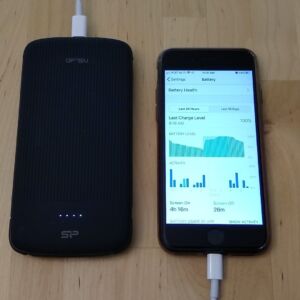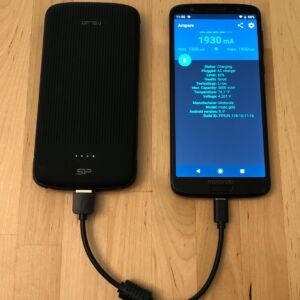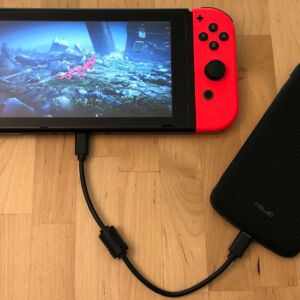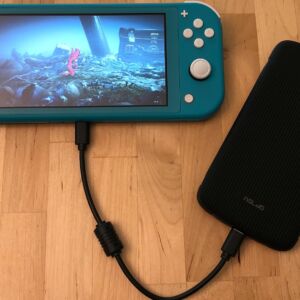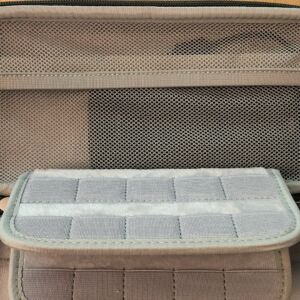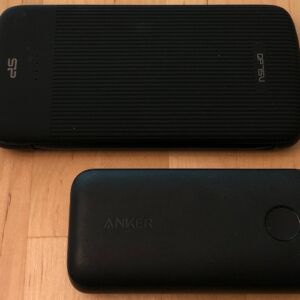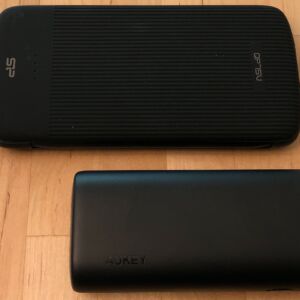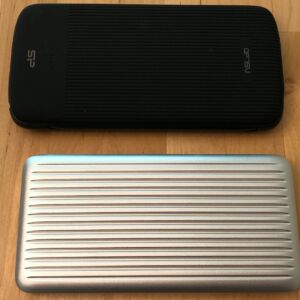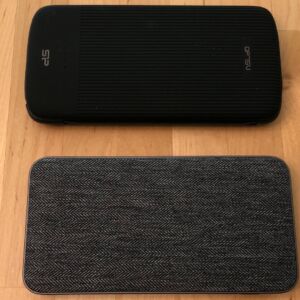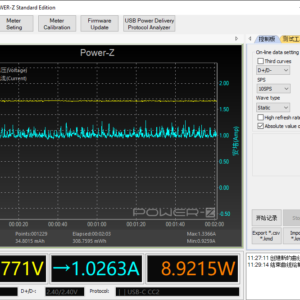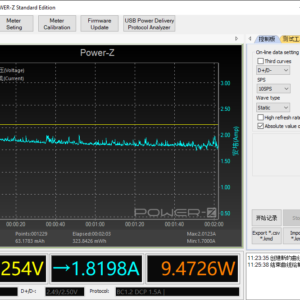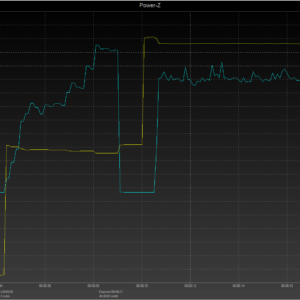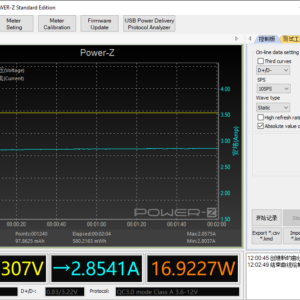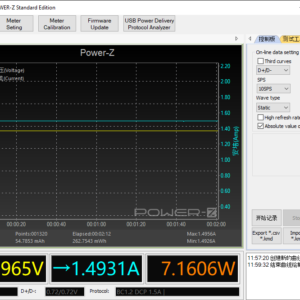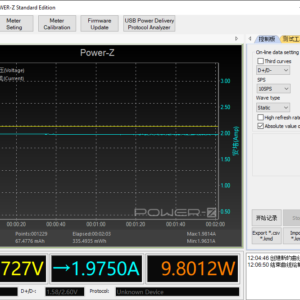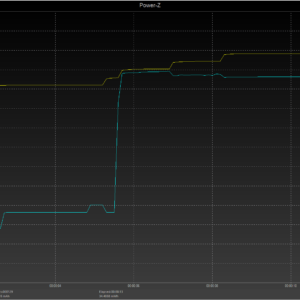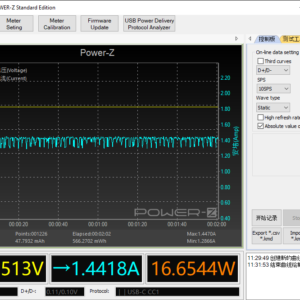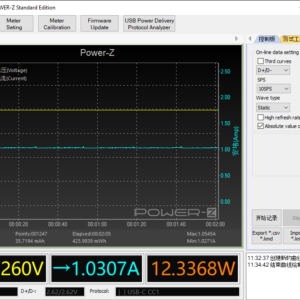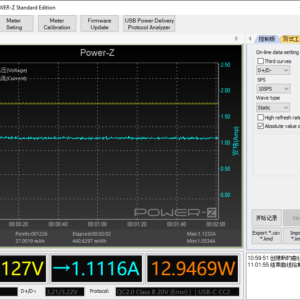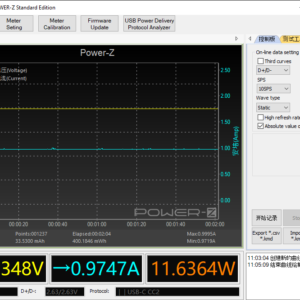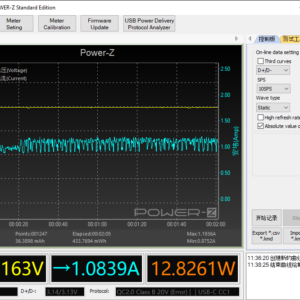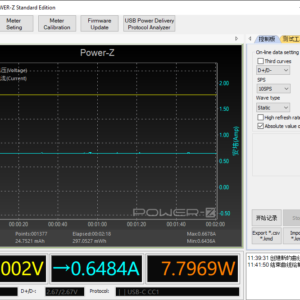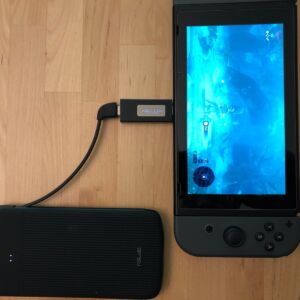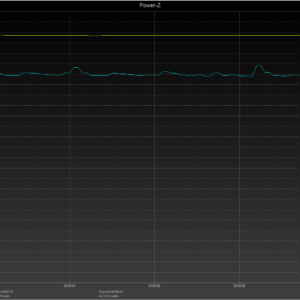SP QP75 PD - A four output power bank for your iPhone, Android, and other heldheld devices
Summary
The SP QP75 PD offers both regular USB ports and built-in cables for connecting it to your handheld devices. Each offers different output levels, giving you options between convenience and time.
Overall
-
Performance
(4.5)
-
Design
(5)
-
Safety
(4)
-
Recharge Time
(5)
User Review
( votes)Pros
- Fast charges iPhone, Samsung Galaxy, Google Pixel, LG, and Motorola phones
- Charges Switch while you play
- Fits in most Switch carrying cases
- Built-in USB-C and micro-USB cables, but no fast charging on them
- Includes a USB-C to USB-C cable
- Includes a USB-C to USB-A cable for Quick Charge devices
- Charge two devices at once, but not with fast charging
- Within FAA limits for lithium batteries and flights
Cons
- Quick Charge 3.0 over USB-C is against USB-C specs
- Can’t be recharged by Nintendo Switch AC Adapter
Disclosure: As an Amazon Associate I earn from qualifying purchases. SP provided the product in this review.
Model: QP75
Tech Specs:
- Ports: USB-C, USB-A, USB-C cable (built-in), micro-USB cable (built-in)
- USB-C Port Output:
- 18W USB-C Power Delivery 3.0 (5V/3A, 9V/2A, 12V/1.5A)
- Quick Charge 3.0
- Huawei FCP
- Apple 2.4A
- USB-A Port Output:
- 18W Quick Charge 3.0
- Huawei FCP
- Apple 2.4A
- USB-C Cable Output:
- 15W USB-C (5V/3A)
- micro-USB Cablle Output:
- 10.5W USB
- Input: 18W USB-C PD (5V/3A, 9V/2A)
- Capacity: 10,000mAh | 37Wh
- Size: 5.8 x 3 x 0.6 inches | 148 x 74 x 15.5 mm
- Weight: 7.5 oz | 213 grams
Learn more about Fast Charging.
Included In Box:
- SP QP75 PD
- USB-C to USB-C cable, 9-inch
- USB-C to USB-A cable, 9-inch (56k Ohm resistor)
- Travel pouch
Good For:
- Commute
- Travel
- iPhone
- Android
- Nintendo Switch (handheld)
- iPad Pro (pre-2018)
Estimated Number of Charges:
- iPhone 6/7/8/SE: 3 charges
- iPhone Plus/X/XR: 2 charges
- Samsung Galaxy S8/S9: 2 charges
- iPhone 11, Samsung Galaxy S10/S20: 2 charges
- Nintendo Switch (2017): 4.5 hours of play
- Nintendo Switch (2019): 6.5 hours of play
- Nintendo Switch Lite: 6.75 hours of play
First Impression
The SP QP75 PD at first glance seems like a plain power bank. Its USB-C and USB-A ports are on opposite ends, with no power reset button on the unit. The corners by the USB-C port pull away to reveal a built-in USB-C and micro-USB cable. They have connectors at right angles and can reach up to 4 inches. The power bank could sit in the middle of a table with four devices on each side connected for charging.
Compared To Similar Power Banks
| Charger | SP QP75 PD | Anker PowerCore 10000 PD Redux Review | No products found. Review | SP QP66 PD Review | ZMI PowerPack 10K USB-C Review |
| Ports | USB-C, USB-A ports USB-C, micro-USB cables (built-in) | USB-C, USB-A | USB-C, USB-A | USB-C, USB-A, Lightning, micro-USB | USB-C, USB-A, micro-USB |
| Output | 18W USB-C PD Quick Charge 3.0 | 18W USB-C PD | 18W USB-C PD Quick Charge 3.0 | 18W USB-C PD Quick Charge 3.0 | 18W USB-C PD Quick Charge 3.0 |
| Capacity | 10,000mAh | 10,000mAh | 10,000mAh | 10,000mAh | 10,000mAh |
| Cable | USB-C to USB-C cable | USB-C to USB-C cable | USB-C to USB-C cable | USB-C to USB-A cable | USB-C to USB-C cable |
| Dimensions | 5.8 x 3 x 0.6 in 7.5 oz | 4.2 x 2 x 1 in 7.0 oz | 4.1 x 2 x 1 in 6.4 oz | 5.4 x 2.7 x 0.5 in 7.5 oz | 5.5 x 2.8 x 0.6 in 7.4 oz |
| Price | Price not available | No products found. | $21.99 | Price not available |
Prices are from Amazon Product Advertising API, last updated on 2024-10-22.
You can see more USB-C power banks here.
Device Testing
Check with your device’s manufacturer to verify which charging standards it supports.
USB Power Delivery & Quick Charge 4+ Phones
- Apple iPhone 8/X/XR/XS/11/SE
- Essential Phone
- Google Pixel
- LG ThinQ/V30
- Razer
- Samsung Galaxy S8/S9/S10/S20
- Samsung Galaxy Note 8/9/10
- Xiaomi Mi 8/9
- ZTE Axon Pro 9/10
Using an iPhone 8 for testing we find USB PD phones will fast charge over the USB-C port. iPhones will need to use a USB-C to Lightning cable, not included. And Android phones will need a USB-C to USB-C cable, which is included.
For iPhones the USB-A port supports Apple 2.4A. An older, but still functional fast charging standard. Older iPhones (4-7) can fast charge using USB-A. Newer iPhones will charge ~15 minutes faster using USB-C.
The built-in cables will not work with iPhones. Androids with USB-C or micro-USB can connect to the built-in cables, but they won’t fast charge.
Quick Charge 3.0 Phones
- HTC
- LG
- Motorola
- Nokia
- Samsung Galaxy
- Sony
- Xiaomi Mi 5/6
- ZTE
Using a Moto G6 for testing we see Quick Charge will fast charge over the USB-A port. Any QC supporting Android phone with USB-C can use the included USB-C to USB-A cable.
Quick Charge is also supported on the USB-C port. The Moto G6 fails to get QC over USB-C, as that is an issue with that particular model phone. Other QC supporting Android phones would be expected to work over USB-A or USB-C.
The built-in micro-USB cable does not support Quick Charge.
Nintendo Switch
Works well for all model Nintendo Switch in handheld/tabletop mode.
- Nintendo Switch (original) – Charges while you play, but the original model Switch under draws at 12V. So it won’t charge as fast as a similar charger offering 9V or 15V (12W vs 18W).
- Nintendo Switch (2019 update) – Charges near its max rate while playing and sleeping.
- Nintendo Switch Lite – Charges near its max rate while playing and sleeping.
This is connecting to the USB-C port. You can connect a Switch to the built-in USB-C cable, but it’ll provide a ~40% slower charge rate.
It will not support the Switch’s dock, as it doesn’t offer the required output.
Learn more about charging the Switch.
Built-in Cables
The built-in USB-C and micro-USB cables only provide normal charge rates for their standards (15W and 10.5W respectively). With a matching Android (iPhones can’t use either) you have the option of carrying only the power bank and using the built-in cables. But you give up faster charge rates, going from ~30 minutes for 0-50% to twice that.
No Fast Charging With Two or More Devices
If you connect two or more devices to the power bank it will disable all fast charging tech.
Between the USB ports and built-in cables it will only provide up to 15W (5V/3A) total. Shared between two phones that’s okay, especially if only topping off. Between four devices you’re not going to see a good charge rate. And the power bank’s 10,000mAh capacity can only take so much from that many devices.
When you connect a second device you’ll notice the charging resets on the first. This is the power bank stepping down to a lower output level. If you disconnect the second device you’ll want to unplug and replug the first. To make sure fast charging turns back on.
This limitation is typical of many power banks. A few can allow for one fast charging and one regular charging. Fewer still allow for dual fast charging, and those are always large and heavy. There is a limit to how much current can cross its circuits without extra hardware. Which adds size, weight, and cost.
Whether you should fast charge one device or regular charge two depends on battery levels and your immediate needs. The closer both devices are to 100%, the less impactful not fast charging becomes.
Quick Charge 3.0 Over USB-C
The presence of Quick Charge over USB-C is against USB-C specifications. Such chargers have been around for years without issue. But we don’t know what the future holds.
Under section 4.8.2 of USB-C specifications a proprietary charging method cannot change the voltage of USB-C output (between 4.40V and 5.25V) in a manner not defined by USB methods. Quick Charge operates at higher than default voltages. And so goes against the specifications. USB Power Delivery is an open source charging method. Created alongside USB-C, it is with specs even though it also increases voltage. The big difference is USB PD uses communication lines to negotiate power transfer. While proprietary methods take over the data lines for their negotiation. They do so because legacy USB connections, such as USB-A, don’t have comm lines.
There is no known risk with running proprietary charging standards over USB-C. Manipulating the data lines does disrupt data transfers. But when plugging into a wall charger or power bank there is no data transfer anyway. Some USB-C engineers warn against using any USB-C chargers with third party standards. Their concern is unforeseen consequences. Future technology may prove to be incompatible with such configurations. And pulling out a charger several years from now with a new device could have a bad result.
I have not run into any issues with these fast charging standards on this or any other charger. But as it is a spec violation I want you to be informed. If you’re a stickler for meeting USB-C specifications this isn’t a good charger for you. If you’re more pragmatic it works fine and has no known issues.
Summary
The SP QP75 PD offers its users choice and the ability to charge their options each day. The USB ports support the full range of connectors and offer fast charging. The built-in cables support Androids only for phones, but also one less thing to carry around.
For phones the USB ports fast charges iPhone 8/X/XR/XS/11/SE, Samsung Galaxy, and Google Pixel. It also fast charges LG and Motorola phones, and any other Android which supports Quick Charge. Huawei models can also receive fast charging, though only through their older FCP standard.
The Nintendo Switch charges in handheld mode while you play. Due to the 12V power profile the original model Switch charges slower than it should. But still enough to charge the Switch with the most demanding games. The newer models (August 2019 and later) aren’t affected.
The built-in USB-C and micro-USB cables do not support fast charging. Each will provide a regular charge rate, about 40% slower than what the ports offer. In exchange you don’t need to carry a separate cable. iPhone owners will get little to no benefit, as they don’t support those connectors.
There are no bells and whistles, such as wireless charging, pass through charging, or trickle charging. The perk here are the built-in cables for lighter carries and more convenience.
About SP
SP (Silicon Power) has U.S. based support (web, email, phone) and a 13 month limited warranty on their power banks. Founded and headquartered in Taiwan with branch offices in the USA (California), Netherlands, Japan, and Hong Kong.
Bottom Line
The SP QP75 PD offers regular USB ports (with included cables) and built-in cables. The ports offer fast charging, the built-in cables offer convenience. You can take your pick which you prefer, while being able to charge your mind day to day.
Buy if you:
- Need to fast charge an iPhone, Samsung, Google, or many other Androids on the go
- Like having the option of leaving separate cables at home (as long as you don’t use an iPhone)
- Want a power bank that can connect to several devices right out of the box
Don’t buy if you:
- Need an all-in-one option for both handheld and larger devices
- Have no interest in built-in cables
- Are looking for advance charging features, including wireless and trickle charge
You’ll want a USB-C wall charger to quickly recharge this USB-C power bank. I recommend the AUKEY PA-Y18 18W PD.
Be sure to check the Deals page to see if this or a similar charger is on sale.
Enjoyed this review? Sign up for the Switch Chargers newsletter and get updates on future reviews and Nintendo Switch related deals.




